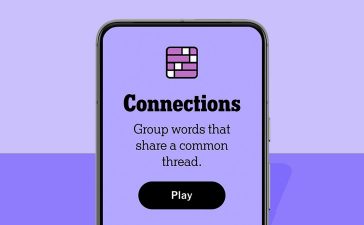The iPhone 15 will be here in a couple of months, but at this point there’s not a lot of excitement or buzz around its arrival. You might think Apple would be concerned. But it likely doesn’t have anything to worry about
Recent Canalys data gives the iPhone around 21% of market share as of Q1 2023 — just one percentile behind Samsung. In May, data from Counterpoint gave Apple its highest ever share of the smartphone business, even though sales had declined a little. Apple set a March quarter record for iPhone revenue with $51.3 billion sales. During its most recent fiscal call, the company said its installed base of users is at an all-time high with new sales records in key emerging markets such as India, Indonesia, and Turkey.
Apple magic: More revenue on lower sales
Within the context of a complex economic environment, Apple is increasing the revenue it generates from every iPhone user across the life of the product while also increasing average revenue per unit sold.
Interest in both the iPhone 13 and iPhone 14 favored the company’s highest-end models, with some reports claiming executives were concerned at the slow uptake of the iPhone 14 Plus. If people didn’t buy the standard issue iPhone, they used their available consumer credit to go Pro. Users like the outstanding cameras, Dynamic Island, the superb display — all powered by Apple’s powerful chip. And buyers apparently wanted the peace of mind every couch potato enjoys when they invest in Emergency SOS and an accompanying Apple Watch Ultra so they can watch football on TV+.
But can Apple play the same trick this time around?
I’ve a feeling this year’s efforts may be tougher. Energy prices, interest rate fluctuations and exploding mortgage and credit card payments are taking a big chunk out of some of Apple’s key territories.
To be sure, Apple is working to mitigate collapsing confidence with successful investments in the economies on the way up to replace those left behind, but will this dance prove sufficiently profitable to offset weakness elsewhere? I’m not certain, though Apple’s ability to surprise must never be ignored.
What to expect from iPhone 15
So what surprises might be in store in the upcoming iPhone 15 range?
The first seems to be that Apple plans to make a clear division between iPhone and Pro models. You’ll need the curvy, titanium-framed higher-end models to get your hands on the first 3nm A17 processors, which are expected to deliver better performance and better battery life than today. These models are expected to cost up to $200 more, some analysts claim.
Those chips will also likely drive some of the most advanced photography features we’ve ever seen in an iPhone, and I can easily imagine that you will be able to record video for playback on the company’s Vision Pro devices.
If that happens, Spatial Video Recording on iPhone Pro Max, with its periscope zoom lens, should help increase the quantity of content created for Apple’s mixed reality goggles. You’ll be taking footage of virtual environments in which you can sit and remember (and share) some of the most precious people, moments, and places you ever manage to go. Think how nice that footage might seem five years from now when it pops up in your Journal.
The everyday iPhones won’t be ignored. They will step up a grade. We know that over time Apple slips its pro features into the rest of the range, and this time will be no different. Expect Dynamic Island (and USB-C ports) across the 6.1-in. and 6.7-in. iPhone range.
Last dance with Qualcomm?
Expect Wi-Fi 6E throughout and enjoy what may turn out to be the very last Qualcomm 5G radio in an iPhone. Apple will deliver battery life boosts across its devices, and it seems likely it will move to only sell eSIM-equipped iPhones in additional countries, beyond the US where it already does.
We can predict broader support for Emergency SOS by Satellite and perhaps the extension of additional features for satellite-based communication on iPhones. (Don’t forget Apple will only offer that feature for free for just over another year, so it will inevitably build out the service to make it even more attractive.) All this hardware will be accompanied by features (known and unknown) to come along with iOS 17, which extends to increasingly versatile tools for enterprise deployment.
Will this be enough to maintain momentum?
Apple must hope its new devices will provide sufficient excitement to keep iPhone users seeking upgrades, while maintaining a steady increase in the number of Android switchers. In terms of mind share, the only significant competitors will be new breed folding phones, which won’t be adopted en masse until consumers are certain they are sufficiently resilient to last as long as an iPhone. Apple isn’t expected to introduce its own foldable mobile before 2025, analyst Ming-Chi Kuo has said.
All the same, Apple is not immune to market forces, and while the new device will probably help ensure continued gain in relative market share, naysayers might consider the chance of record-setting unit sales so soon after three such successful years to be quite slight.
A 250-million-upgrade opportunity
As Wedbush analyst Dan Ives pointed out last month, there are around 250 million iPhones in use that haven’t been upgraded in the last four years. Coupled with increased iPhone sale prices and accelerating adoption of Apple services, the company’s challenge will be to spread just enough of its fabled reality distortion to convince those millions to upgrade.
All the same, to this jaded Apple commentator, it feels as if there’s an imagination gap the company must fill when it announces its new products in September. Given previous efforts, it likely will.
Please follow me on Mastodon, or join me in the AppleHolic’s bar & grill and Apple Discussions groups on MeWe.
Copyright © 2023 IDG Communications, Inc.












